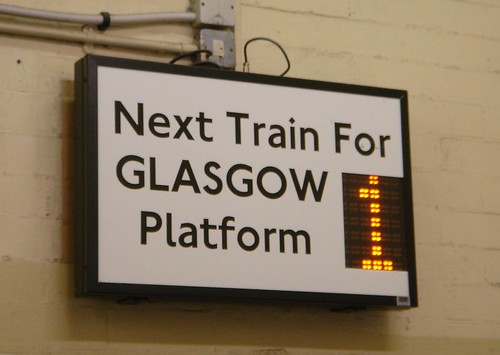Radio Festival – the three days where the entire UK radio industry gathers to discuss the future of the radio industry, address the topics of the day, and indulge in the unprecedented transfer of value from wallets to bars. (Although this year’s free bars have been widely praised).
So where and how did Digital feature in this celebration of radio, and what did Lesley Douglas (Controller, BBC Radio 2) say that was the most insightful and valuable contribution of the whole event?
Twelve years ago, DAB warranted a token primer session in Techcon. (“Here is a picture of a mul-ti-plex. You can transmit many stations on one mul-ti-plex. It uses au-dio en-cod-ing called Emm-Peg Two”). I drove people around Birmingham in a Black Thunder demonstrating a DAB radio the size of a small beer fridge.
This year, ITIS and Fraunhofer presented useful and interesting applications for DAB. ITIS explained the many varied uses of TPEG, including the very topical FPI (Fuel Pricing Information) service (complete with early 2008 diagrams with references to sub £1/litre fuel – how we sniggered). If GPS mapping is the next big thing in terms of mobile technologies, then DAB allows those maps to be populated with large amounts of really useful real-time data. My hunch is that POI (Points of Interest) will itself become a Point of Significantly Valuable Commercial Interest to commercial radio stations (can I register the acronym POSVCI? No?). Fraunhofer demo’ed their Journaline applications, which is a lightweight browseable text service, something like a RSS Reader but delivered over DAB. Neat, but I wonder if it’s aiming at a class of radio (simple text display) that the radio industry is trying to get beyond now?
Festival proper started on Tuesday, with brilliantly produced an fabulously creative session on the Digital Radio Working Group (producer, Nick Piggott, GCap Media plc). Ahem. Look, it was never going to wow people when the report had already been out a week. The discussion (when it finally got going – the crowd took time to warm up this year) focused a lot on in-car receivers, and I felt that Peter Davies got away rather too easily with side-stepping the question about what to do about the punitively high transmission costs being suffered by commercial broadcasters at the moment. There also wasn’t enough discussion about coverage strengthening. But then, it was the first session, and the bar had been open the night before.
There was the obligatory session on music rights, where PPL and PRS/MCPS explain that they’re really only trying to help, but then get nailed (quite rightly) by everyone who asks a question from the crowd, and big kudos to Jay Crawford for exposing the levels of desperation to claw money from people to such an extent that they set up call centres to do mass enforcements of “workplace” music licences. A quick conversation with the landlord of the local hostelry confirmed that he’d been strong-armed into getting a licence because his chef occasionally has the radio on in the kitchen. Madness, from the people who brought you “let’s sue 12 year olds”.
But the really interesting thing about Festival now is that Digital crops up everywhere. It’s just part of life. (I don’t think it got mentioned in Matthew Bannister’s amusing session on compliance, made even more hysterical by Muff Murfin using at least three words from the seriously banned list unaware that two school kids had been ushered into the hall behind him for the next session).
On Wednesday, we had a session on visualising radio, which just served to highlight the commonality of the vision for radio in the future. I was on the panel next to Ben Chapman (Radio 1), and the fact is that we pretty much agree. Ben’s got different ideas on what his visuals will be, and in that respect it’s the very embodiment of “agree on technology, compete on content”. Radio is going to visualise, so the race is on to see who does it first, and who does it best (clearly, GCap will do both). There were some slightly random contributions from Westwood about his YouTube successes. (I wonder if he’s called that because of Westwood Hill, Sydenham, SE26). Chris North of Wise Buddah reminded us (as only an agent can) that artistes have finite time, so we need to bear that in mind when we come up with endless digital extensions to work on.
However, it was Lesley Douglas who really contributed significantly to the digital debate this year, in the dying moments of the festival. In a session where a panel of key industry people (Andrew Harrison, Tony Moretta, Lesley Douglas) take questions from the audience, one question prompted the discussion “has the UK picked an out of date digital technology?”. The conclusion, as usual, is no – when you properly consider all the elements that lead to success, there’s no better choice than DAB/Eureka 147. But Lesley closed the panel by saying something along the lines of:
I hope that this is the last year we have to discuss the technology, and that next year we’ll be talking much more about the content of digital radio, which is what matters far more to listeners.
I couldn’t agree more.
